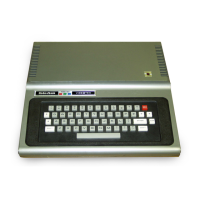Lesson
#1
Introduction
to
BASIC
To use the BASIC capabilities of the Model 100, you must first learn how to
communicate with your Computer. Essentially, this involves typing instructions on the
keyboard and watching the display for responses from the Computer.
While you can type anything you wish on the keyboard, the Model 100 only responds
to words written in its own
"language." This "language"
is
BASIC.
If
you type
something which the Model
100
does not recognize
as
a BASIC word, it will respond
with an error message.
In this lesson, you will learn a few BASIC commands
to
communicate with your
Computer and write simple programs.
It should be mentioned at this point, that even when you type a BASIC word, the
Model
100 will not respond until the ENTER key (located in the right side of the
keyboard)
is
pressed. After pressing
(ENTER),
the line just typed is placed in memory
for processing by the Computer.
Throughout this Manual, the phrase "enter this command" will be used often. This
simply means that you should press
~
after typing the command or instruction.
Also, when
we
tell you
to
press
~,
you should press both
(SHIFT)
and
(PAUSE)
together.
Accessing BASIC
Prior
to
typing or editing a BASIC program, you must access the BASIC interpreter
of
the Model 100.
When you Power-Up the Computer, you will see the Main Menu, which shows all the
''files'' that exist in the Model 100's memory. Think
of
these computer files simply
as
file folders that may hold text or programs.
If
you haven't created any files, the Main Menu displays the built-in application
programs:
11:06:08
(C)Microsoft
TEL
COM
ADDRSS
20897
Bytes
free
On initial Power-Up, the Main Menu Cursor - the large, dark rectangle - is
positioned over the word
"BASIC."
The Cursor can be placed on any other Menu
word by pressing the Cursor Movement Keys
«(3
, G ,rn ,or rn).
3

